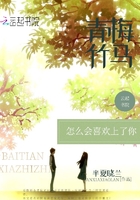During one of my first visits to the botanical garden, I met the Chinese pond heron, a small, strikingly coloured heron of a species that I did not know before. They are there everywhere in the trees and near the water. At that time I witnessed something that made me observing for two hours, deep in thought, while my camera was most busy. Across, on an island in the Fairy Lake, two young herons were pursuing an adult bird, begging constantly. As the young birds were fledged, the parent bird was apparently finally decided to start with education and to inform them that the time of baby feeding was over. They harassed the adult, it fled again and again or banished them. On one occasion a young bird perched on its back, this was too much for it and it hid in the bushes. The young birds wandered around, searching, did not find it and flew away at last.
Then after some time it left its hiding place, sat on a low-lying branch and within minutes had caught a small fish. To my surprise, it flew to my side of the lake, landed only about seven metres away from me in the tree and turned the fish (by raising its head abruptly, slightly opening the beak in very controlled manner and tossing the fish upwards) so that the fish finally slid down the beak into its throat – now it could swallow, otherwise the fish would not have got down.
The two young birds annoy the adult bird.
After it has hidden and gotten rid of the two adolescents,
it can catch a fish and swallow it just in front of me.
It was an exciting, rarely observed thing, especially so much close-up!
Today I visit the Forest of Petrified Trees where more than seventy different kinds (probably more than 500 specimen) of partially giant fossil trees from all over China are on display. An impressive site that I enjoy almost on each of my visits.
I notice a large group of older people with big cameras on tripods, equipped with even larger telephoto lenses. I already have a very decent professional camera, such as I also perceive among this group, but my 100-to-400-mm zoom lens really is a toy, when compared to the 400, 500 and 600-mm-telephoto lenses presented here.
The collection of petrified trees from all over China The pensioners’ bird photographer group in the forest is impressive. of petrified trees, waiting for the special bird.
They talk shop all the time, engineer Su is explaining The experts verify to make sure everything is something to his friend. properly set, because for this is no time when the
bird shows up.
All of these guys are apparently ten to fifteen years older than me, they are standing in small groups around a large bush, a shrub with bright red flowers, at a distance of only two or three metres. But why on earth do they need such telephoto lenses to photograph the bush and its flowers? I am standing there some time, not sure whether to leave or to consider interesting what is going on here.
After a little while, I decide just to address those people. It seems that no one understands standard Chinese (Mandarin), i. e. that Chinese which (if I may say so) I am trying to speak. They all speak Cantonese of which I hardly understand a word, and vice versa probably. But one elderly man understands me at last and replies, being able to talk Mandarin.
Before I can ask curiously what they are doing here, I am asked myself, because my equipment isn’t looking unprofessional, either. First my camera is examined (with approving murmur), then the lens (mild frown). Now I am asked where I come from, which is usually always the first standard issue, but now subordinated to the more technical subject, what am I doing here in China (interpreted by the fellow in Cantonese, for those around him), whether this was my first visit to the botanical garden, how long I have been already in China, why I am learning Chinese and so on. Next, I am offered something to eat, they have all kinds of fruit here, which I must not refuse.
Then we address my subject. I learn that they are waiting here for a bird, apparently a rare bird of which they know that it shows up here from time to time, but when? I learn that this bird feasts on the flowers – is that a hummingbird? I don’t know the Chinese word for “hummingbird”, so I paraphrase it – no, it wasn’t a hummingbird. A sun-bird maybe? I translate freely from the English: “tai yang niao (太阳鸟)”, no idea whether there is a name for this family of birds in Chinese at all, but I am lucky. It is
Finally there is the scarlet-backed flower-pecker, the contrast of its plumage with the red colour on the back is overwhelmingly beautiful.
exactly the term for a sun-bird
– no, they aren’t waiting for a sun-bird, either.
So, we are trying to get more specific. I ask for getting the name pronounced very slowly, writing it in phonetic notation into my mobile phone, character for character, and let the fellow decide which character has to represent what syllable: “zhu bei zhuo















